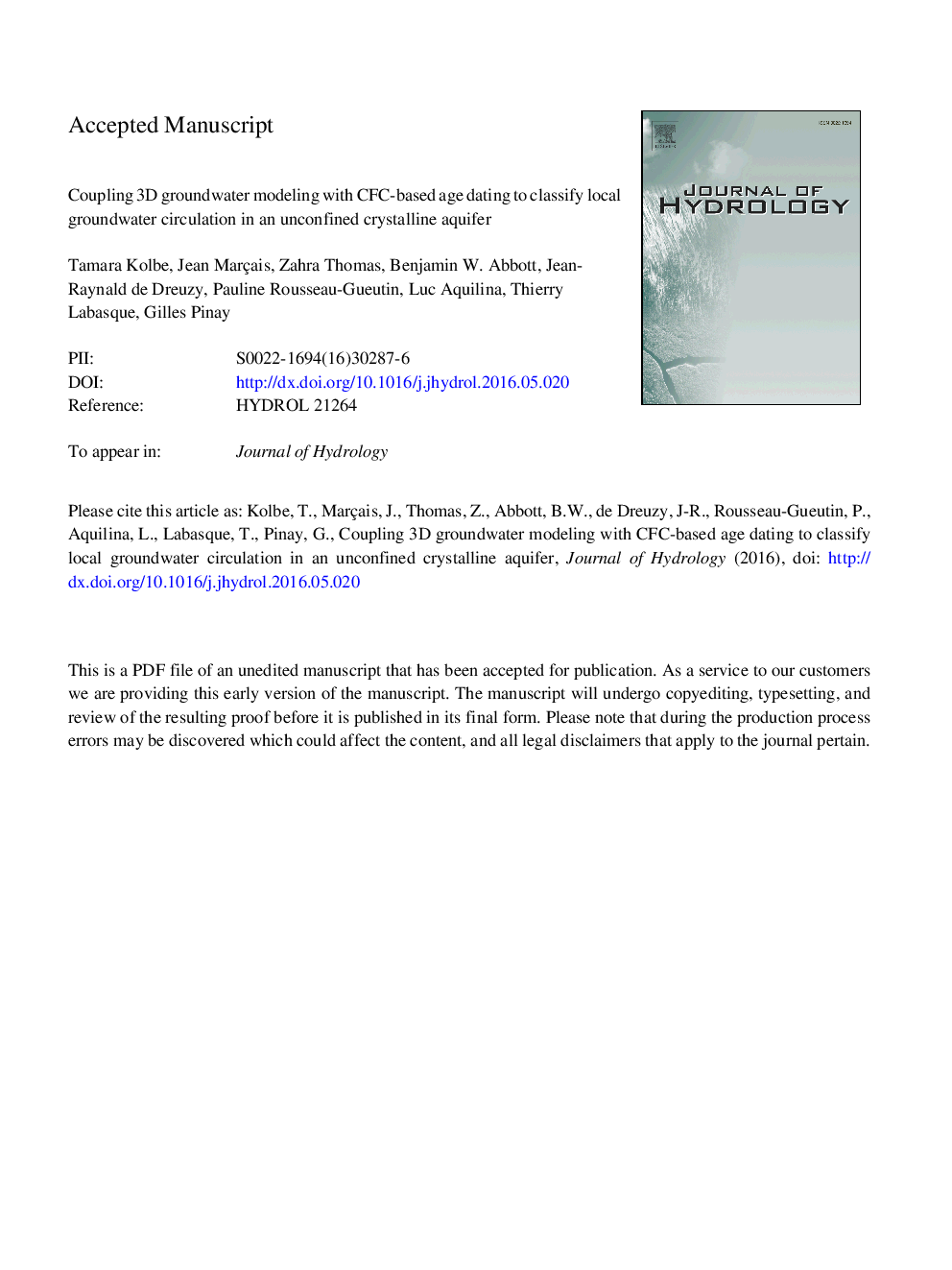| کد مقاله | کد نشریه | سال انتشار | مقاله انگلیسی | نسخه تمام متن |
|---|---|---|---|---|
| 5770946 | 1413307 | 2016 | 47 صفحه PDF | دانلود رایگان |
عنوان انگلیسی مقاله ISI
Coupling 3D groundwater modeling with CFC-based age dating to classify local groundwater circulation in an unconfined crystalline aquifer
دانلود مقاله + سفارش ترجمه
دانلود مقاله ISI انگلیسی
رایگان برای ایرانیان
کلمات کلیدی
موضوعات مرتبط
مهندسی و علوم پایه
علوم زمین و سیارات
فرآیندهای سطح زمین
پیش نمایش صفحه اول مقاله

چکیده انگلیسی
Nitrogen pollution of freshwater and estuarine environments is one of the most urgent environmental crises. Shallow aquifers with predominantly local flow circulation are particularly vulnerable to agricultural contaminants. Water transit time and flow path are key controls on catchment nitrogen retention and removal capacity, but the relative importance of hydrogeological and topographical factors in determining these parameters is still uncertain. We used groundwater dating and numerical modeling techniques to assess transit time and flow path in an unconfined aquifer in Brittany, France. The 35.5 km2 study catchment has a crystalline basement underneath a â¼60 m thick weathered and fractured layer, and is separated into a distinct upland and lowland area by an 80 m-high butte. We used groundwater discharge and groundwater ages derived from chlorofluorocarbon (CFC) concentration to calibrate a free-surface flow model simulating groundwater flow circulation. We found that groundwater flow was highly local (mean travel distance = 350 m), substantially smaller than the typical distance between neighboring streams (â¼1 km), while CFC-based ages were quite old (mean = 40 years). Sensitivity analysis revealed that groundwater travel distances were not sensitive to geological parameters (i.e. arrangement of geological layers and permeability profile) within the constraints of the CFC age data. However, circulation was sensitive to topography in the lowland area where the water table was near the land surface, and to recharge rate in the upland area where water input modulated the free surface of the aquifer. We quantified these differences with a local groundwater ratio (rGW-LOCAL), defined as the mean groundwater travel distance divided by the mean of the reference surface distances (the distance water would have to travel across the surface of the digital elevation model). Lowland, rGW-LOCAL was near 1, indicating primarily topographical controls. Upland, rGW-LOCAL was 1.6, meaning the groundwater recharge area is almost twice as large as the topographically-defined catchment for any given point. The ratio rGW-LOCAL is sensitive to recharge conditions as well as topography and it could be used to compare controls on groundwater circulation within or between catchments.
ناشر
Database: Elsevier - ScienceDirect (ساینس دایرکت)
Journal: Journal of Hydrology - Volume 543, Part A, December 2016, Pages 31-46
Journal: Journal of Hydrology - Volume 543, Part A, December 2016, Pages 31-46
نویسندگان
Tamara Kolbe, Jean Marçais, Zahra Thomas, Benjamin W. Abbott, Jean-Raynald de Dreuzy, Pauline Rousseau-Gueutin, Luc Aquilina, Thierry Labasque, Gilles Pinay,